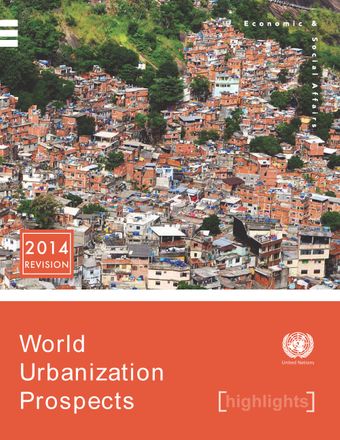- Home
- Books
- World urbanization prospects
- Chapter
Cities

- Author: United Nations
- Main Title: World urbanization prospects , pp 13-16
- Publication Date: August 2014
- DOI: https://doi.org/10.18356/3d1b2f6d-en
- Language: English
Megacities are notable for their size and concentration of economic activity, but are home to only about one in eight of the world’s urban dwellers. In 1990 there were 10 cities with more than 10 million inhabitants (figure 8), and these so-called “megacities” were home to 153 million people, representing less than 7 per cent of the global urban population. Today, the number of megacities has nearly tripled to 28, the population they contain has grown to 453 million, and these agglomerations now account for 12 per cent of the world’s urban dwellers. Tokyo is the world’s largest city with an agglomeration of 38 million inhabitants, followed by Delhi with 25 million, Shanghai with 23 million, and Mexico City, Mumbai and São Paulo, each with around 21 million inhabitants. By 2020, Tokyo’s population is projected to begin to decline, although it will remain the world’s largest agglomeration in 2030 with 37 million inhabitants, followed closely by Delhi, whose population is projected to rise swiftly to 36 million (figure 9). While Osaka (Kinki Major Metropolitan Area) and New York-Newark were the world’s second and third largest urban agglomerations in 1990, by 2030 they are projected to fall in rank to the 13th and 14th positions, respectively (Annex Table II).
© United Nations
ISBN (PDF):
9789210568098
Book DOI:
https://doi.org/10.18356/527e5125-en
Related Subject(s):
Human Settlements and Urban Issues
Sustainable Development Goals:
-
From This Site
/content/books/9789210568098c004dcterms_title,dcterms_subject,pub_keyword-contentType:Journal -contentType:Contributor -contentType:Concept -contentType:Institution105
/content/books/9789210568098c004
dcterms_title,dcterms_subject,pub_keyword
-contentType:Journal -contentType:Contributor -contentType:Concept -contentType:Institution
10
5

